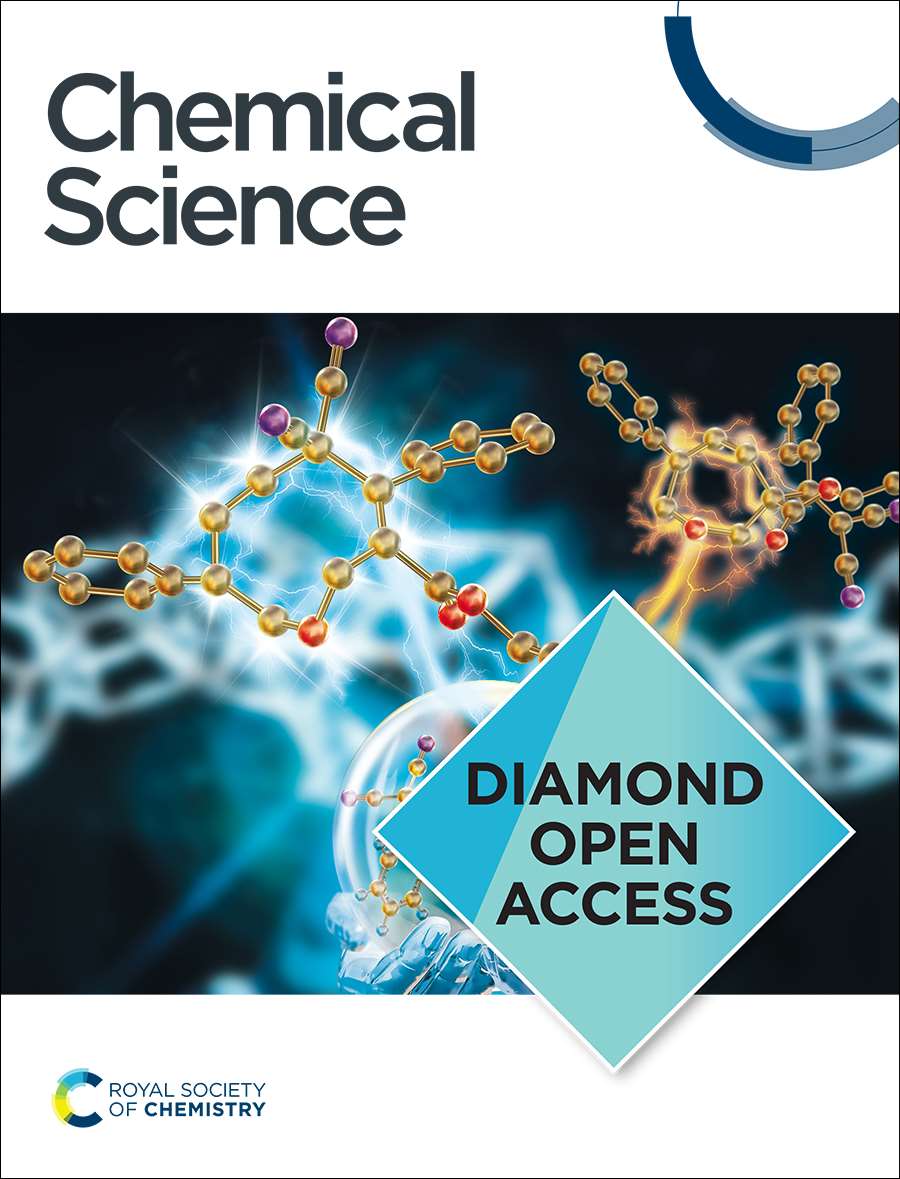Modulating the Direction of Catalytic Glyoximate Sites of Covalent Organic Frameworks towards Electrocatalytic Nitrate Reduction
IF 7.4
1区 化学
Q1 CHEMISTRY, MULTIDISCIPLINARY
引用次数: 0
Abstract
Two-dimensional (2D) covalent organic frameworks (COFs) with metal centers are ideal template to construct electrrocatalysts due to their high degree of structural controllability. However, the metal centers were stacked in column with limited space, which impeded mass delivered to catalytic sites across the pore channels. Herein, we have first demonstrated topologic synthesis strategy to construct catalytic sites in three-dimensional (3D) direction. The designed 3D COF adopted ffc topology, with large space of 1.15 and 1.53 nm between the metal sites along parallel and vertical directions, respectively. The in-situ spectroscopies revealed 100% Ni-N4 sites in 3D frameworks have reconstructed to Ni N4-NO, while the reconstruction proportion of Ni-N4 sites was 40% for 2D COF (with a distance between metal sites of 0.38 nm). The catalytic 3D COF enable to electrochemical synthesize of NH3 via reduction of nitrate (NO3RR) with a rate of 9.51 mg mgcat−1 h−1, 140% of that from the 2D catalytic at −0.7 V vs RHE. The theoretical calculation further revealed the reconstructed Ni N4-NO site had a stronger binding ability of the reactants and intermediates than that of the initial Ni-N4 site, and thus contributed to higher activity. This work provides general design strategies for heterogeneous catalysts in electrocatalytic systems.电催化硝酸还原共价有机框架催化乙氧肟酸位点方向的调节
具有金属中心的二维共价有机骨架(COFs)由于其高度的结构可控性是构建电催化剂的理想模板。然而,金属中心堆积成柱状,空间有限,这阻碍了物质通过孔通道传递到催化位点。在此,我们首次展示了拓扑合成策略,以构建三维(3D)方向的催化位点。所设计的三维COF采用ffc拓扑结构,平行方向和垂直方向的金属位间距分别为1.15 nm和1.53 nm。原位光谱显示,三维框架中100%的Ni- n4位点被重构为Ni N4-NO,而二维COF中Ni- n4位点的重构比例为40%(金属位点之间的距离为0.38 nm)。在−0.7 V vs RHE条件下,三维催化COF可以通过还原硝态氮(NO3RR)电化学合成NH3,还原速率为9.51 mg mgcat−1 h−1,是二维催化的140%。理论计算进一步表明,重构后的Ni- N4-NO位点比初始的Ni- n4位点对反应物和中间体的结合能力更强,因此具有更高的活性。这项工作提供了电催化系统中多相催化剂的一般设计策略。
本文章由计算机程序翻译,如有差异,请以英文原文为准。
求助全文
约1分钟内获得全文
求助全文
来源期刊

Chemical Science
CHEMISTRY, MULTIDISCIPLINARY-
CiteScore
14.40
自引率
4.80%
发文量
1352
审稿时长
2.1 months
期刊介绍:
Chemical Science is a journal that encompasses various disciplines within the chemical sciences. Its scope includes publishing ground-breaking research with significant implications for its respective field, as well as appealing to a wider audience in related areas. To be considered for publication, articles must showcase innovative and original advances in their field of study and be presented in a manner that is understandable to scientists from diverse backgrounds. However, the journal generally does not publish highly specialized research.
 求助内容:
求助内容: 应助结果提醒方式:
应助结果提醒方式:


